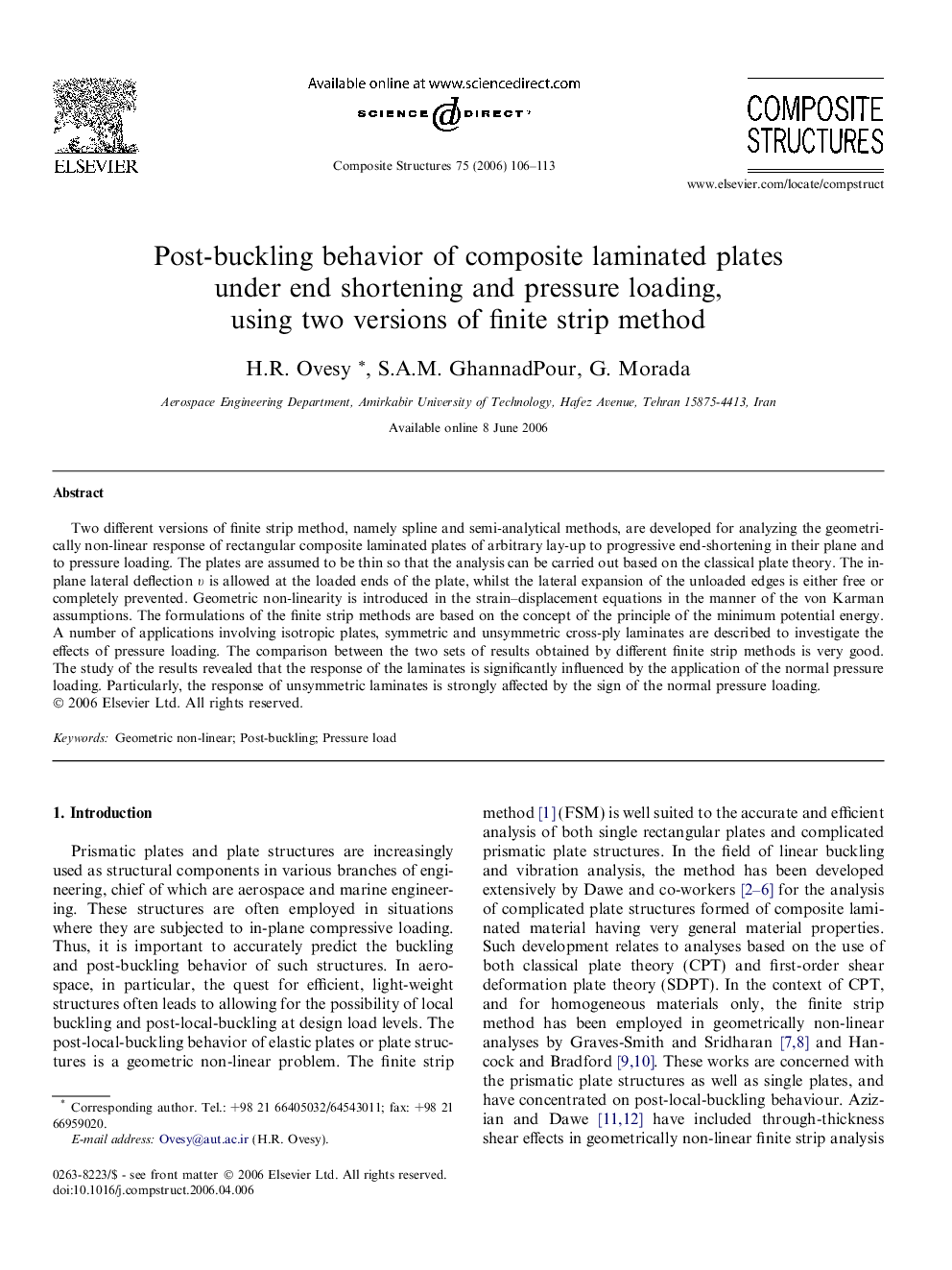| Article ID | Journal | Published Year | Pages | File Type |
|---|---|---|---|---|
| 254173 | Composite Structures | 2006 | 8 Pages |
Two different versions of finite strip method, namely spline and semi-analytical methods, are developed for analyzing the geometrically non-linear response of rectangular composite laminated plates of arbitrary lay-up to progressive end-shortening in their plane and to pressure loading. The plates are assumed to be thin so that the analysis can be carried out based on the classical plate theory. The in-plane lateral deflection υ is allowed at the loaded ends of the plate, whilst the lateral expansion of the unloaded edges is either free or completely prevented. Geometric non-linearity is introduced in the strain–displacement equations in the manner of the von Karman assumptions. The formulations of the finite strip methods are based on the concept of the principle of the minimum potential energy. A number of applications involving isotropic plates, symmetric and unsymmetric cross-ply laminates are described to investigate the effects of pressure loading. The comparison between the two sets of results obtained by different finite strip methods is very good. The study of the results revealed that the response of the laminates is significantly influenced by the application of the normal pressure loading. Particularly, the response of unsymmetric laminates is strongly affected by the sign of the normal pressure loading.
